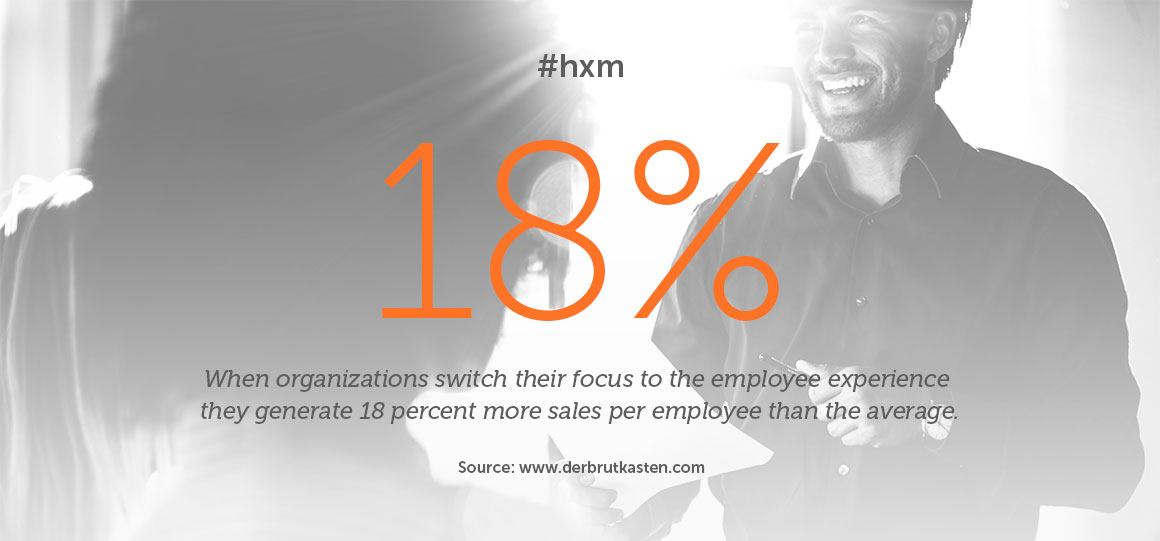HXM – where employees are human beings, not resources

The most important resource of any company is its staff. They are its most valuable asset, the key to its success. These kinds of platitudes are commonplace. What doesn’t get said so much is that staff members are, first and foremost, human beings. They have different skills and needs. They also have different expectations of their jobs. However, there is one thing almost all of them have in common – they long to feel more valued and to have a meaningful activity. This was the finding of a study conducted by the XING career networking site. According to this study, half of employees would be prepared to earn less if it meant having a fulfilling or socially responsible job.
HXM puts employees’ needs at the heart of things
This is precisely why it is so important for HR staff to get on board with human experience management (HXM). This concept focuses on the individual wishes, needs and expectations of staff members (the employee experience), meaning it has a very different focal point to human capital management (HCM). While HCM primarily aims to optimize processes and contribute to the company’s success by making staff management as efficient as possible, HXM is about not seeing employees as “capital” or “resources”. Instead, it strengthens their role as active “collaborators” in shaping the company.
That is important. After all, the Gartner Digital Workplace Survey 2019 found that dissatisfied staff members are twice as likely to go and work for a competitor than employees who feel happy in their job. This means HXM pays off in two ways. first, it benefits employer branding, and second, by lowering staff turnover it also lowers costs – analysts at Deloitte have calculated the associated expenses to be 15,000 euros per position. And that’s not all. It has been shown that when organizations switch their focus to the employee experience, they become more productive, have lower staff turnover, and also achieve greater customer satisfaction. According to experts, they also generate 18 percent more sales per employee than the average.
A recent survey by market research company Gartner shows how important it is to have this subject on the agenda. It found that just 13 percent of employees are satisfied with their working experience. This has to change! The only question is, how? More than anything else, it will take a change in the role of the HR function. To improve the employee experience, HR departments must move from being administrators to creators. At the same time, members of the HR team should not be asking simply what the workforce can do for the company, but also what the company can do for the workforce. This means a fundamental change in perspective. After all, the best way to get rid of any shortcomings in employees’ working experience and optimize it to the full is to see it from their side.
HXM takes account of employees’ experiences
Intelligent HR management solutions such as SAP SuccessFactors HXM provide the perfect platform for this. Using innovative technologies such as machine learning and artificial intelligence, they gear career planning, working models and training opportunities to the needs of employees in a targeted way. As a result, staff feel appreciated and valued, have a stronger bond with the company and are much more motivated.
It is therefore all the more important to regularly ask the workforce how they are doing. That’s the only way for the employee experience to be based not only on operational data such as salary structures and turnover rates, but also on individuals’ accumulated knowledge and how they feel about their working lives. These “X-data” offer HR staff an insight into the emotional circumstances of their workforce. Are they happy in their team, or would they like to take on other tasks? How satisfied are they with their supervisor? Which tools might make their work easier? These kinds of questions can easily be answered using a survey platform such as Qualtrics. In addition, cutting-edge HR suites such as SAP SuccessFactors offer high-performance tools for efficient implementation and analysis of survey findings. The outcomes of these analyses can then be used to design tailored measures for an employee experience – assuming the HR staff are sufficiently familiar with the relevant tools.
Companies fail to identify the needs of employees
However, this is precisely where the issue lies in many places. Although 84 percent of companies have recognized the need for action when it comes to human experience, one in three HR development officers does not feel sufficiently equipped for the task. More work is therefore required to bridge the gap between the needs of the workforce and the potential of HR development – especially as many managers have a completely false assessment of what their employees actually want. This is hardly surprising, since only half of companies regularly ask their employees about their needs, and only around one in ten employees (14 percent) believes that bosses really use staff feedback to improve the employee experience. It is therefore high time to do something about this by deploying an HXM system.





